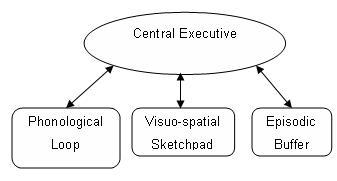research
summary
Diagnosis
of Alzheimer’s disease should be made as
accurately and early as possible. The more severe symptoms of
Alzheimer’s
disease can be delayed using medication, but this delay is much more
efficient
in people who are in the early stages of the disease (Giacobini, 2000).
There
is also evidence that people in the pre- or early diagnosis stages are
more
likely to benefit from rehabilitation (Clare, Woods, Moniz-Cook, Orrell
&
Spector, 2005). It is also crucial to have a way of assessing the
impact on
cognitive abilities of Alzheimer’s disease progression, and
of any
pharmacological or other therapies. This means that it is essential to
have a
diagnosis of Alzheimer’s disease as accurately and early as
possible.
Memory
problems are the central symptom of
Alzheimer’s disease. Diagnosing Alzheimer’s disease
on the basis of memory
difficulties alone, however, is problematic. This is because memory
difficulties are not specific to Alzheimer’s disease. They
are also a common
feature of healthy ageing and can be caused by a number of disorders.
Research
by our group and colleagues has shown that
people with Alzheimer’s disease have significant difficulties
doing two things
at once: ‘dual-tasking’. Healthy older adults do
not demonstrate any difficulty
dual-tasking. This dual-task impairment, therefore, may be specific to
Alzheimer’s disease.
We are
now trying to convert our research tools into
a clinical assessment, and ensure that these results are sensitive and
specific
to Alzheimer’s disease. After this, we hope that this tool
will be used by GPs,
psychiatrists, psychologists and neurologists to assist diagnosis of
Alzheimer’s disease and allow follow up studies to check
whether treatments are
effective.
what is dual-tasking?
It is thought that
dual-tasking, the
ability to do
two things at once, is a product of the brain’s ability to
coordinate. We
understand this dual-task coordination to be part of ‘working
memory’. In 1974, scientists Alan Baddeley and Graham Hitch
proposed that short-term memory
should be thought of as ‘working memory’, which can
store
and maintain a
certain amount of information temporarily. Information may be
phonological
(sounds/language) or visuo-spatial (vision/space). Phonological
information,
such as a friend’s telephone number, is handled by the
‘phonological loop’ and
visuo-spatial information, such as the route you would plan to take to
go to
your friend’s house, is handled by the
‘visuo-spatial
sketchpad’.
Phonological
and visuo-spatial information can be
integrated to form a memory. This is done by the ‘episodic
buffer’. These three
‘slave’ systems: the phonological loop,
the visuo-spatial sketchpad and
the episodic buffer, are co-ordinated by the ‘central
executive’:

Baddeley’s (2000) Model
of Working Memory
When we
do two things at once, such as walking and
talking, Baddeley’s (2000) model of working memory suggests
that the central
executive has to coordinate the phonological loop and visuo-spatial
sketchpad
slave systems for successful performance of these two concurrent
activities. It
is therefore proposed that central executive dysfunction can cause
dual-task
impairment, as seen in people with Alzheimer’s disease.
what
happens to dual-tasking
ability in alzheimer’s disease?
In
1986, Baddeley, Logie, Bressi, Della Sala and Spinnler reported that
people
with Alzheimer’s disease (AD) demonstrate a selective
impairment in
dual-tasking. They based their conclusions on studies comparing people
with AD
with healthy young and older adults, performing two tasks at once: a
tracking
task as well as an articulatory suppression, simple reaction time to
tone or
auditory digit span task. They found that when tracking was paired with
simple
reaction time or digit span task (but not articulatory suppression),
the people
with AD performed dramatically lower than the healthy young or older
adults.
This effect remained even when the difficulty of the tracking task, and
the
length of digit span were adjusted, so as to equate performance across
the
three groups when the tasks were performed alone. The group
hypothesised that
this effect was not seen when the tracking task was paired with the
articulatory suppression task because it was not sufficiently demanding
to
require the participant to dual-task.
Some
suggested, however, that the findings in the Baddeley et al. (1986)
study could
have been caused by information overload. Thus, Baddeley, Bressi, Della
Sala,
Logie and Spinnler (1991) did a follow-up study of the same
participants,
assessing their ability to dual task when the level of difficulty of
the two
tasks was adjusted. They suggested that should the cause of the
impairment be
due to overload, there should be greater difficulty across all tasks:
single or
dual, when task difficulty was increased. They found, however, that
there was
further decrement in performance in the dual-task condition only.
Furthermore,
they found that there was no tendency for more difficult single tasks
to show
greater sensitivity to the progression of the disease.
These experiments and findings
suggest that that AD features a specific impairment in
the central executive. Further research has found that dual-task
performance correlates with the presence of behavioural problems
(Baddeley, Della Sala, Papagno & Spinnler, 1997b) and
difficulties
in people with AD performing everyday tasks that require
dual-tasking, such as keeping track of conversations (Alberoni,
Baddeley, Della Sala, Logie & Spinnler, 1992) or talking while
walking (Cocchini, Della Sala, Logie, Pagani, Sacco & Spinnler,
2004).
how can this be developed into a
clinical tool?
Currently, assessments
of memory functioning are
thought to be the most useful tests to detect AD. These tests are very
sensitive to AD, but unfortunately as memory difficulties can be
present in
many other types of disorders and even in normal ageing, these tests
are not
specific to AD. This can lead to diagnostic uncertainty, worrying for
both
patient and significant others, or worse, incorrect diagnosis of AD.
These
tests, therefore, require further components to improve their
specificity.
Previous
research revealed that when single task
difficulty was equated across groups, people with AD have difficulty
dual-tasking,
but younger and older healthy adults do not (Logie, Cocchini, Della
Sala &
Baddeley, 2004). Moreover, difficulty dual-tasking worsens as the
disease
progresses; whereas the ability to do either of the two tasks alone
deteriorates much less dramatically (Baddeley, Bressi, Della Sala,
Logie &
Spinnler, 1991). Furthermore, this dual-tasking impairment has been
found to
exist across a range of different combinations of tasks (Logie et al.,
2004).
The assessment of dual-task ability, therefore, may be an excellent way
of improving
the specificity of AD diagnosis.
A
paper and pencil version was developed, which has been piloted and
found to generate the same results as the laboratory version (Baddeley,
Della Sala, Gray,
Papagno & Spinnler,1997a; Della Sala, Baddeley, Papagno
&
Spinnler, 1995), but this version is not yet ready for
widespread clinical use. Firstly, a sensitive assessment procedure must
be
established; secondly, a larger study assessing group differences must
be
conducted; and thirdly its specificity across a wider range of
disorders must
be assessed. This current project, funded by the Alzheimer’s
Society, aims to
develop a valid and reliable test of dual-tasking ability, which is
sensitive
and specific to Alzheimer’s disease.
references
 |
Alberoni,
M., Baddeley, A., Della Sala, S., Logie, R. H. & Spinnler, H.
(1992). Keeping track of a conversation: Impairments in
Alzheimer's
disease. International
Journal of Geriatric Psychiatry, 7, 639-646. |
|
Baddeley,
A. D. & Hitch, G. J. (1974). Working memory. In G. H. Bower
(Ed.), The
psychology of learning and motivation
(Vol. 8; pp 47 - 89). London:
Academic Press. |
 |
Baddeley, A. D, Bressi, S.,
Della Sala, S., Logie, R. H. & Spinnler, H. (1991). The decline
in working memory in Alzheimer’s
disease: A longitudinal study. Brain, 114,
2521 – 2542. |
|
Baddeley, A., Della Sala, S.,
Gray, C., Papagno, C.,
& Spinnler, H. (1997a). Testing central executive functioning
with a
pencil-and-paper test. In P. Rabbitt (Ed.), Methodology
of frontal and executive function (pp. 61 -
80). Hove: Psychology Press. |
|
Baddeley, A., Della Sala, S.,
Papagno, C.,
& Spinnler, H. (1997b). Dual-task performance in dysexecutive
and nondysexecutive patients with a
frontal lesion.
Neuropsychology, 11, 187-194. |
 |
Baddeley, A. D., Logie, R.,
Bressi, S., Della Sala, S., & Spinnler, H. (1986). Dementia and
working memory. Quarterly Journal of Experimental
Psychology, 38A, 603-618. |
|
Clare, L., Woods, B.,
Moniz-Cook, E., Orrell, M. & Spector, A. (2005). Cognitive
rehabilitation interventions targeting
memory functioning in
early-stage Alzheimer's disease and vascular dementia.
Systematic review.
Cochrane Library. |
|
Cocchini,
G, Della Sala, S.,
Logie, R. H., Pagani, R., Sacco, L. & Spinnler, H. (2004). Dual
task effects of walking
while talking in
alkzheimer disease. Revue
Neurologique, 160, 74-80. |
|
Della
Sala, S., Baddeley, A.,
Papagno, C. & Spinnler, H. (1995). Dual task paradigm: A means
to
examine the central executive. In J. Grafman, K.
J.
Holyoak, F. Boller (Eds.). Structure
and functions of the human prefrontal cortex. Vol. 769.
New York: Annals of the New
York Academy of Sciences, pp. 161-171. |
|
Giacobini,
E. (2000).
Cholinesterase inhibitors stabilize Alzheimer’s disease. Annals of the New York Academy
of Sciences, 920,
321 – 327. |
 |
Logie,
R.H., Cocchini, G., Della
Sala, S. & Baddeley, A.D. (2004). Is
there a specific executive capacity for dual task
co-ordination? Evidence from
Alzheimer’s Disease. Neuropsychology
18,
504-513. |